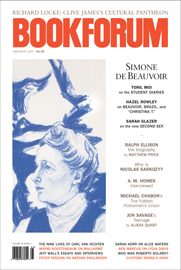
In 1960, Christa Wolf received a phone call from the Russian newspaper Izvestia, inviting her to participate in an imaginative project devised by Maksim Gorky in 1935, which asked writers worldwide to describe their actions during the course of a random day—September 27—as exactly as possible. Wolf, then thirty-one and living in East Germany, not only documented the day but permanently adopted the project as a preventative measure against forgetting. “Transitoriness and futility as twin sisters of forgetfulness: again and again I was (and am) confronted with that eerie phenomenon,” she explains in the introduction to One Day a Year, a collection of annual entries that spans forty-one years. For Wolf, the exercise highlights “the narrative potential to be found in almost any arbitrary day,” a central theme in her 1989 novel, Accident: A Day’s News.
It is also not coincidental that the first sentence of Wolf’s introduction—”How does life come to be?”—echoes the line by poet Johannes R. Becher that prefaces Wolf’s The Quest for Christa T. (1970): “This coming-to-oneself—what is it?” Indeed, One Day a Year is partly an inadvertent guide to motifs in Wolf’s often highly autobiographical oeuvre: the self as foreigner, the German Democratic Republic’s utopian potential, and time’s relentless slippage. It is also a revealing chronicle of key periods in Wolf’s sometimes-painful self-reckoning, detailing, for instance, the aftermath of the release of Interior Ministry files revealing her brief cooperation with the Stasi in the early ’60s.
The landscape of Wolf’s memory is a mosaic of juxtapositions: past and present, public and private, mundane and profound, dream and consciousness. Just after lamenting her reluctant role as a public intellectual, she reports the success of one of her culinary specialties, eggplant-tomato-ham soufflé with rice. Likewise, when she poses the question, “What does carpe diem mean?” the next paragraph has her singing patriotic songs (“I Had a Comrade,” “Long Live the Soldiers”) as she and her husband drive from Dresden to Berlin.
Though Wolf strives for these annual reflections to be “described purely, authentically, free of artistic designs,” they are, in effect, carefully crafted narratives whose cyclical structures are aesthetic forms rather than free associations and are less like static snapshots than brief montages. Though some entries come days or even months after September 27, they typically begin at midnight while Wolf watches television and end either with sleep or at midnight the next day. She is acutely aware of the potential for artifice to infect the diary genre, which for her is authentic because its very core is subjective experience, yet some of these full-circle days risk contrivance for the sake of dramatic effect. Here, as in her fiction, Wolf uses indirect dialogue, creating a remove that sometimes stands in sharp contrast to the vital immediacy of her chosen form.
One of Wolf’s chief concerns here is how the individual comes to identify as part of the historical moment, as “embedded in, bound to our time.” Ultimately, she confronts both herself and the reader with the most fundamental and complex of personal, political, aesthetic, and existential challenges, including the very call to carpe diem that resonates throughout The Quest for Christa T.: “When, if not now?” In a 2005 interview, Wolf described this question as “the compressed expression of the knowledge that every day is precious.” One Day a Year is her most intimate and most powerful celebration of this belief so far.
